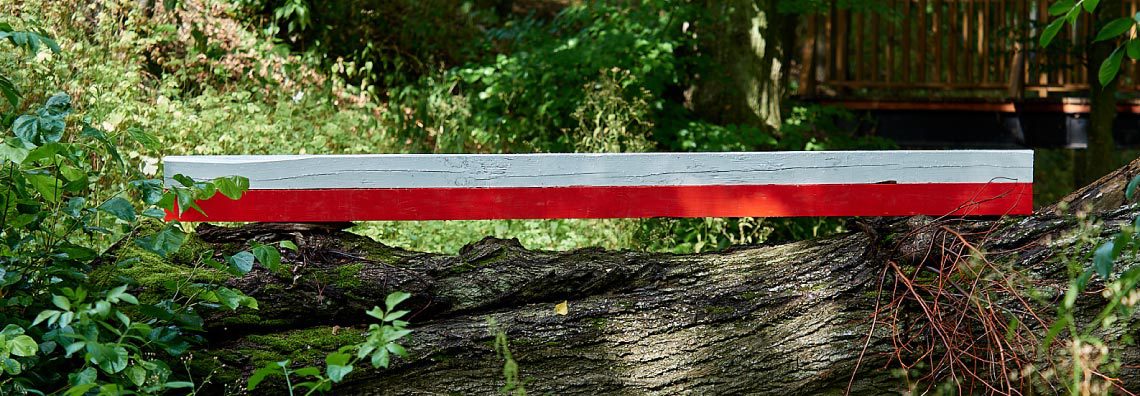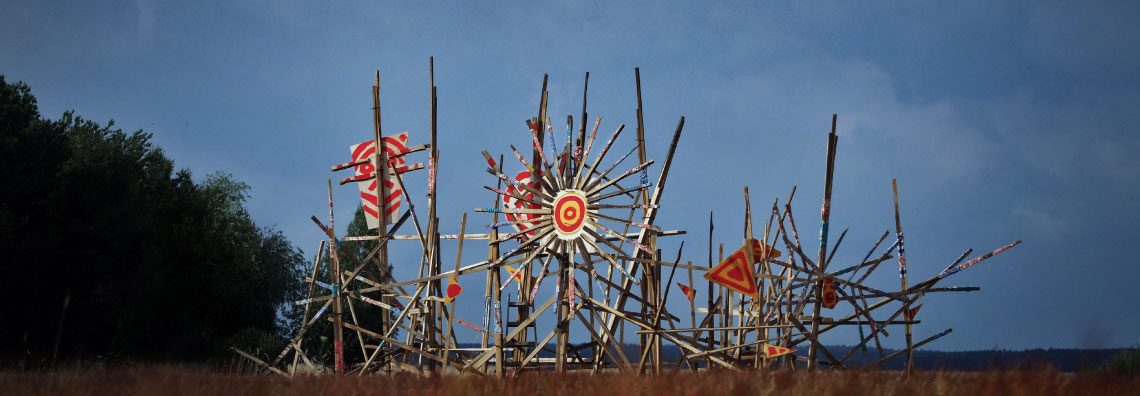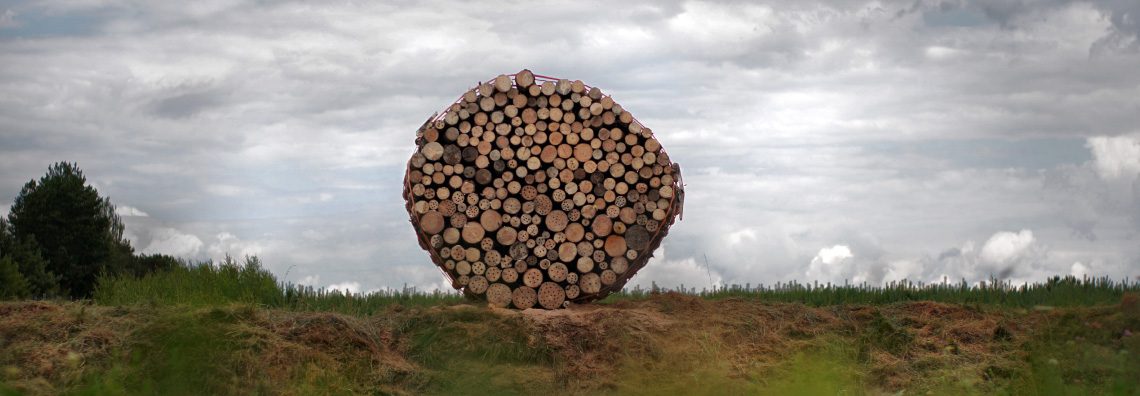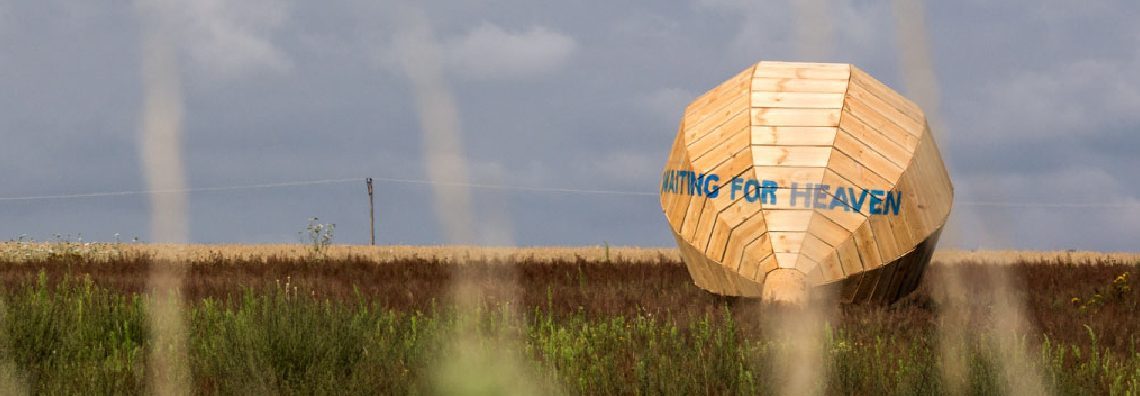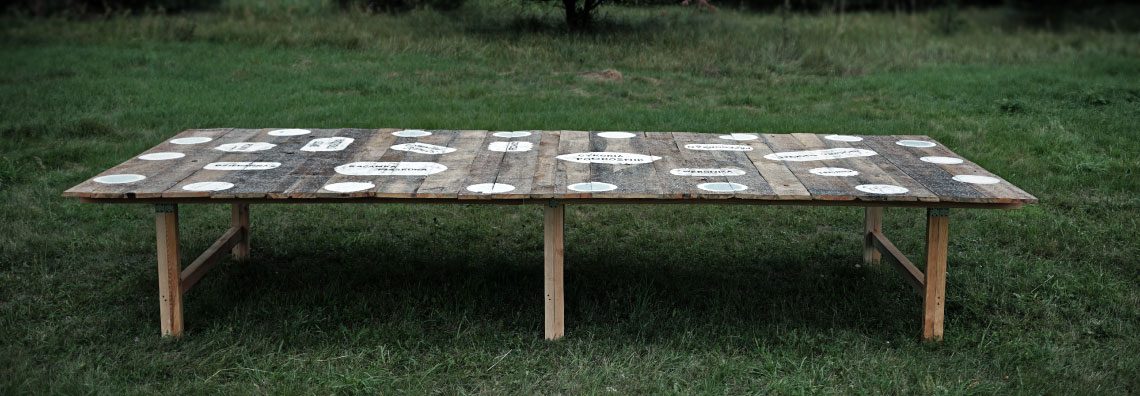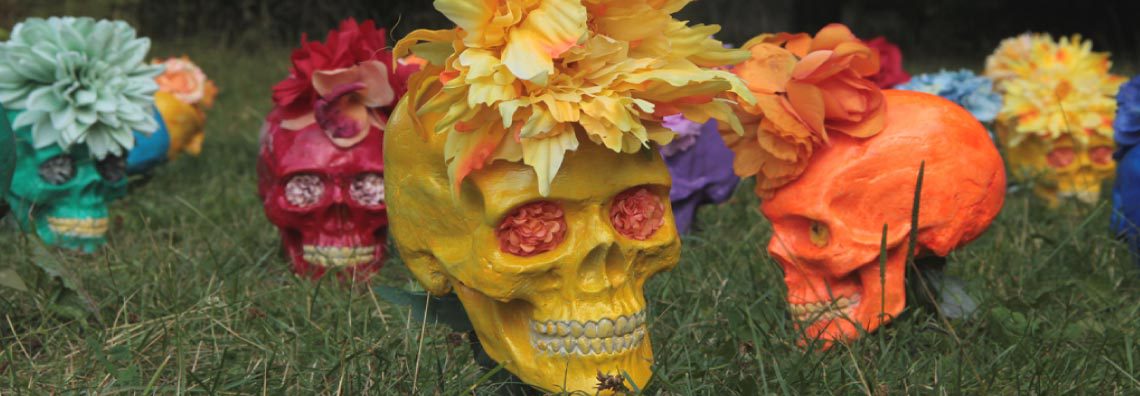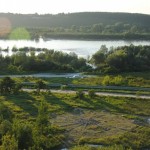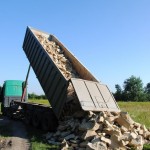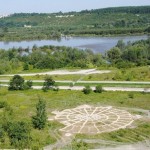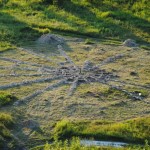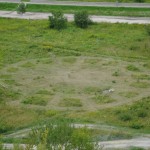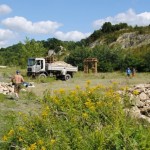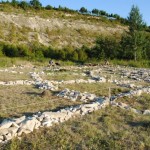Ammonite

The shape of a prehistoric Ammonite was made of 90 tonnes of limestone aggregate heaped in the quarry in Kazimierz Dolny upon the Vistula. Its diameter is about 50 metres. This schematic form resembles an ammonite shell, which is a common fossil from the Paleozoic era. The quarries in Kazimierz Dolny keep a unique, cross-sectional record of several geological epochs. A sediment rock layer with a thickness of 1 metre reflects the transformations lasting five hundred thousand years. The comparison of different layers illustrates the changeable vicissitudes of these areas. Ammonites – an interesting geological curiosity – are fossilised marine creatures which thrived in the Cretaceous period and could reach up to several metres in size. The ammonite shell was composed of spirally arranged cells with connections between them of different shapes and varied surface. Koziara has represented the shell in the form of a schematic drawing consisting of concentrically arranged limestone rocks. The outer ring has hollows carved in the ground where rainwater or other substance can gather. Small puddles of water reflecting sunrays serve as natural jewellery decorating and altering the appearance of the Ammonite.
Koziara’s project literally and symbolically refers to the place and material from which it is made. The Valley of the Vistula with its surrounding steep white slopes is a truly unique place where the geological structure and rock formations affect the land relief. The Ammonite is like an emblem of the Kazimierz quarries. It highlights their properties and constitutes a monumental symbol of tiny shapes preserved in limestone rock. In this work Koziara stresses the perpetual and incessant transformation of matter. This work of land art is subject to the laws of nature, coexists with the environment, gradually changes its colours and becomes more embedded in the ground. This symmetrical figure – like other land art works e.g. The Spiral Jetty on the Great Salt Lake in Utah – refers to the symmetry encoded in nature and the original tissue of the environment.



